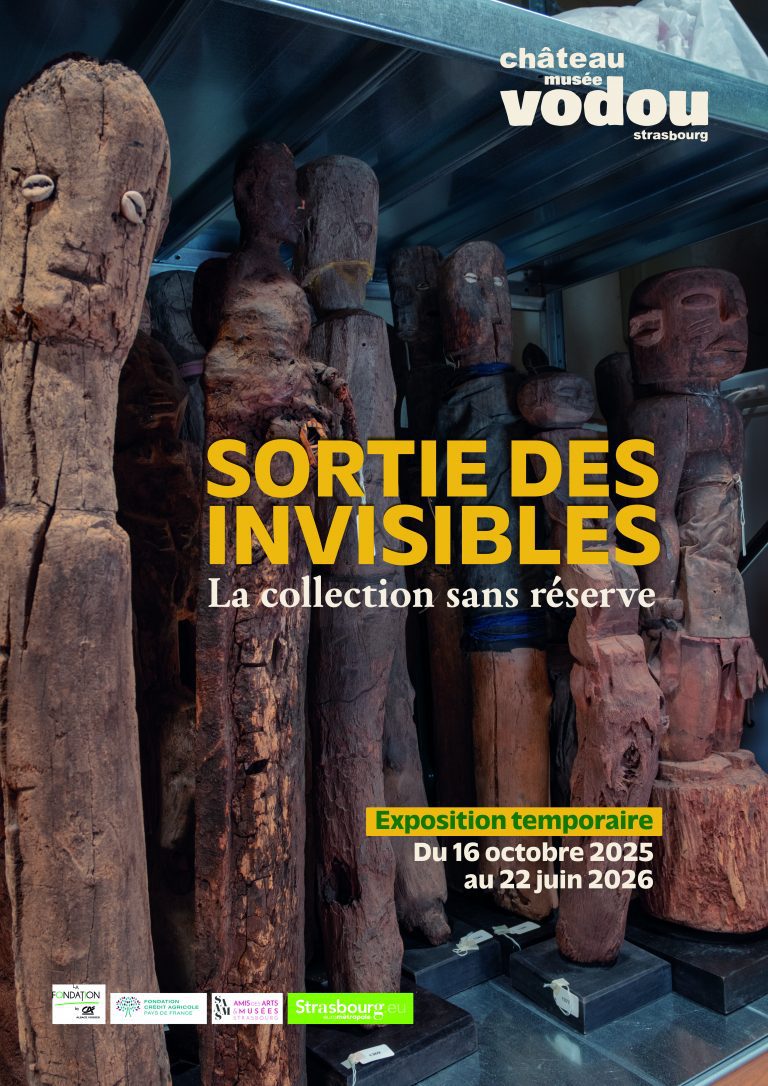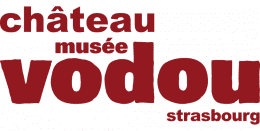Encounter with the invisible world
Unique world collection
OPENING TIMES
Everyday from 2 pm to 6 pm (and some Fridays until 9 p.m.)
—
Groups : 9 am-9 pm, booking required 10 days in advance.
The Château Vodou is a privately-owned and charity-run museum boasting the largest collection of western-African vodou objects in the world. To add to the visitor’s delight, the museum’s permanent collection is on display in a gloriously original water tower dating back to 1878.
Far from the clichés, Vodou is first and foremost a religion originating in West-Africa. It embraces a large spectrum of practices and beliefs, the aim being to maintain harmony between the visible and the invisible worlds. It provides a framework for key moments in life and seeks to cure sickness.
This is but a mere introduction, there is so much more to tell! Come and visit us in Strasbourg and discover Hebieso (the god of thunder), Mami Wata (the goddess of the ocean), Aguin (the spirit of the savanna) and all the other deities of the vodou pantheon.
* Suitable for a younger audience
The term “Vodou” is spelled “Vodoun” in Benin, “Vaudou” in Haiti, and “Voodoo” in Louisiana, where it is still practised. These different names reflect the different traditions that have developed locally. Today, specialists believe there are an estimated 200 million practitioners of Vodou worldwide, taking into account all the various traditions.
TEMPORARY EXHIBITION :
Seeing the unseen: the storeroom unveiled
Temporary exhibition from 16 October 2025 to 22 June 2026
In a museum, the only thing differentiating an exhibited object from a preserved object is a display case.
After a major reorganisation of its storerooms, the Château Vodou lifts the veil on what goes on behind the scenes.
Storage areas, often inaccessible and perceived as spaces where objects are simply kept, are in fact the beating heart of a museum. They enable conservation, study, and transmission.
On average, they house more than 85% of the objects in a collection that are considered ‘too fragile’, ‘off-topic’ or ‘awaiting further information’.
With this new exhibition, the museum team aims to address the principles of heritage conservation, the technical restrictions of storage facilities, the crucial role of inventory, and the ethical issues and controversies that currently affect our practices.
What is the role of a museum? Where does the Vodou museum’s collection come from? How can we preserve objects made of organic materials, some of which are perishable, some sacred, and how can we talk about them? How much of the invisible do we carry with us, even in a museum? What can be preserved, and for how long? Can all objects be exhibited? And who do they really belong to? How can strict museum standards be reconciled with ecological imperatives?
Through the history of the Arbogast collection, we dive back into the geography and history of Vodoun. Each object tells a complex story involving living practices, Western and African perspectives, and museographic choices.
Along the way, visitors will be invited to question the very mission of the museum. Indeed, protecting, interpreting and exhibiting are not neutral activities. They represent a commitment, and sometimes a dilemma. As a self-financed community museum, the Château Vodou embraces its uniqueness: preserving a treasure of collective memory, a fragile heritage born of living cultures, in a listed building, with limited resources.
‘Seeing the unseen’ is at once an exhibition, an investigation and an invitation to think together about the place we give to cultural heritage – today and tomorrow.
A. Beck
The temporary exhibition is available in english

